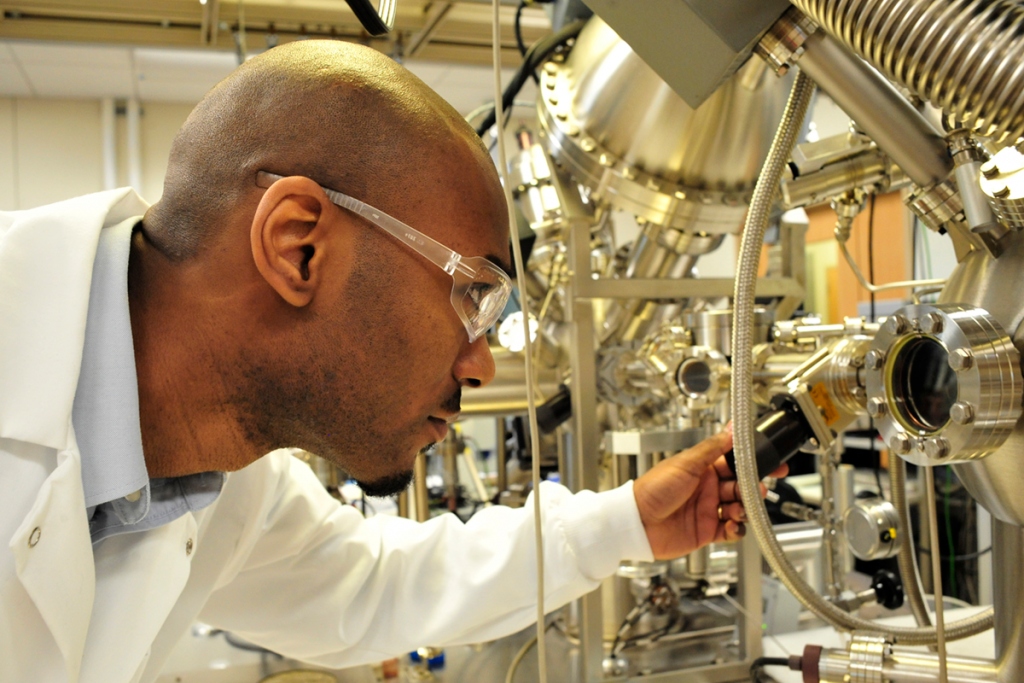
When a venerable product has been around for more than 150 years, you expect it’s been thoroughly examined. But if you think that lead batteries – used for energy storage and transportation since 1859 – belong in this category, think again!
Our understanding of how lead batteries work is poised to take a quantum leap forward. The mission: To reveal the unrealized potential of this tried and tested battery technology.
Now the Advanced Lead Acid Battery Consortium (ALABC) and the U.S. Department of Energy Office of Science’s (DOE-SC’s) Advanced Photon Source (APS) at Argonne National Laboratory, in conjunction with Electric Applications, announced a signed agreement to use some of the most advanced tools on earth to examine the complex chemical interactions inside lead batteries.
A First for Lead Batteries
The lead battery industry joins the ranks of more than 230 companies that have research agreements with Argonne’s Advanced Photon Source (APS) facility, including Chevron, E3M, Bayer, Exxon and a roster of leading pharmaceutical firms.
The research will be a collaborative effort between Argonne’s APS facility and the laboratory’s Chemical Sciences and Engineering Division and the Materials Science Division. The APS is a DOE Office of Science National User Facility that provides ultra-bright, high-energy X-ray beams for research in almost all scientific disciplines.
The Need to Unleash Potential
This multi-year, multi-million dollar agreement demonstrates the enormous interest in energy storage and development of the next generation of batteries. Lead batteries provide 75 percent of the world’s rechargeable battery energy needs. These batteries are the foundational technology underpinning everything from the cars we drive to the mission-critical infrastructure where reliability and safety are paramount.
Although lead batteries have been in use for more than 150 years (and have a 99 percent recycling rate), there is significant untapped potential, and thus, great opportunity. This project provides a base of scientific insight to advance lead battery energy storage and cycling capabilities, as the demand for energy storage escalates worldwide.
The announcement follows DOE’s recent $120 million renewal of the Joint Center for Energy Storage Research (JCESR), a DOE Energy Innovation Hub also led by Argonne National Laboratory and focused on advancing battery science and technology.
How an APS Synchrotron Works
The Advanced Photon Source is one of the world’s premier high-energy synchrotrons. It played a central role in the studies that garnered the 2009 and 2012 Nobel Prizes in Chemistry.
Think of the synchrotron as a light source on steroids. It produces high-energy, high-brightness x-ray beams that produce large quantities of high-energy photons in a very small area, within a very short time. Photons are subatomic particles that represent a quantum of light that moves at the speed of light within a vacuum.
Put simply, the synchrotron will allow researchers to watch in real time the chemical transformations at atomic and molecular levels that occur in lead batteries during charge/discharge. The instant results will help researchers determine the effects of various battery additives and material purity on battery performance at an accelerated pace, reducing hours in a laboratory to a blink of the eye.
Companies Involved
All participating companies operate in the U.S. Those guiding the research program are Crown Battery Manufacturing Company, Doe Run Resources Corporation, East Penn Manufacturing Company, EnerSys, Exide Technologies, Johnson Controls, NorthStar Battery Company, RSR Technologies, and Trojan Battery Company. Associate participants are Superior Graphite, Microporous LLC, Cabot Corporation, Borregard Lignotech, and Advanced Battery Concepts. The program manager is Electric Applications Incorporated of Phoenix.
Learn More
- Summary of Lead Battery Science Research Program
- Read Our News Release
- DOE, Industry Partner to Improve Lead-Acid Batteries for Power Grid, Cars


